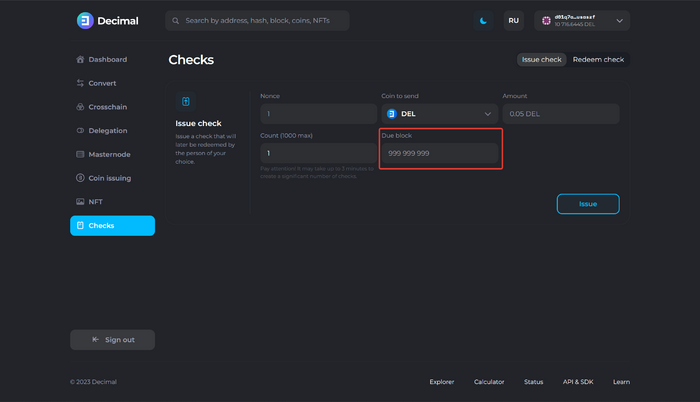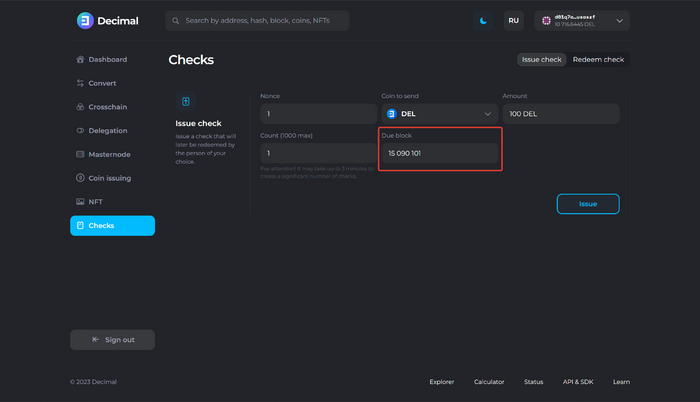How to calculate the validity period of a check
During the creation of a check, there is a field called Due block:

The Due block field is used to limit the validity of the check. If you want an indefinite check, leave this field blank. However, if you want the check to expire after a certain amount of time, you need to calculate the block at which it will expire. To do this, look at the height of the current signed block in the explorer. You can access the explorer at https://explorer.decimalchain.com:

Find the last signed block (14,658,101 in our example) and record its number. Now calculate how many days you want to add to this value. Keep in mind that Decimal blockchain signs around 14,400 blocks per day, or one block every six seconds. For example, if you want to limit the check to one month, multiply 30 days by 14,400:
14400 * 30 = 432,000
Add this number to the last signed block:
14 658 101 + 432 000 = 15 090 101
Insert this value into the Due block field, and your check will be valid for 30 days, expiring at block 15,090,101.
